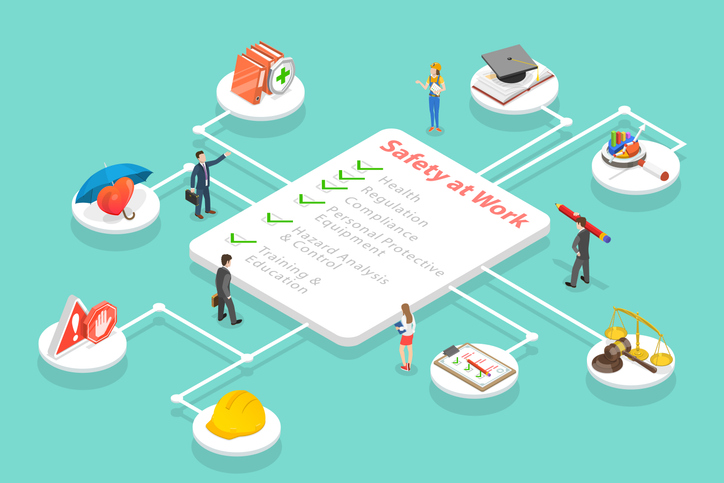7 Indicators of a Best-in-Class Safety Culture
Making positive organizational changes to your safety culture starts at the top, but a multitude of other business goals can make it difficult for a leadership team to prioritize its performance. These criteria may help companies identify when they are achieving success.
April 8, 2024

One of the most critical components of a risk manager’s role is incorporating safety into their organization’s culture. However, organizational safety culture can be challenging to define, creating obstacles to measuring a successful integration.
“We can measure the success of a safety program, but attributing it as a manifestation of purely culture changes can be tricky,” said Jared Smith, Risk Services Manager at Safety National. “Especially since there can be both positive and negative aspects of a safety culture depending on overall employee attitudes towards how they interact with safety among their co-workers.”
These best practices may help safety and risk managers verify the strength of their organization’s safety culture.
1. Organizational meetings are held to recognize safety efforts.
Lunches, trainings, and all-hands meetings can be used to enforce safety measures and compliment employees for their work towards achieving them, furthering organizational safety. Every opportunity to encourage the importance of following safety protocol with employees in combined meetings can help instill and reinforce a safety mindset in the organization.
2. Operational and field supervisors participate in safety meetings.
Building a safety committee that includes company stakeholders from a variety of departments and job levels can offer valuable input on the company’s risk management program. Ideally, top-level supervisors are invested in the process, but it is also important to have field and operational supervisors participate due to their knowledge of day-to-day job duties and close working relationships with operational employees. This will help ensure that the safety committee’s efforts trickle down to the right segments of the workforce.
3. Leadership teams discuss safety in their meetings.
Does executive leadership discuss safety concerns, accidents, and investigations within the organization? If so, the tenor of the discussions within those meetings has a better chance of disseminating to the rest of the organization. To enforce a strong safety culture, it is important to lead by example with a strong message of support for safety initiatives.
4. Employees remind leadership of the safety rules in the field or other operations.
Do employees ensure that supervisors are wearing personal protective equipment at the job site? After all, the safety rules apply to everyone within the organization, regardless of position or title. When employees are empowered to encourage safety amongst their colleagues, especially toward organizational leadership, it demonstrates broad adoption, acceptance, and enforcement.
5. Employees and supervisors take accountability.
When reading accident reports, are employees blaming the car, equipment, coworker, or weather for an accident? Employees who are accountable for accidents, recognize their mistakes, and present an apologetic attitude toward the accident are more likely to learn from their mistakes and improve. Without acknowledging their role in the accident, they are prone to repeating errant behavior. Additionally, when leadership accepts responsibility for their faults, employees are more likely to follow a safety culture since there is perceived equality. Accountability across the organization is vital for building a strong safety culture.
6. All accidents and incidents are investigated for review.
Are employees reporting all incidents, even when they are very minor? Are all incidents being investigated and reviewed by supervisors to identify areas of opportunity? When all incidents, both major and minor, are investigated and reviewed, it shows employees that the organization takes all incidents very seriously. Accident reviews should also focus on correcting behavior and not discipline. While behavioral correction may occasionally involve discipline, the focus should be on ensuring incidents are not repeated.
7. Incidents are shared throughout the organization.
There are reasons why some incidents should not be shared throughout the organization to protect the employee. Still, the more incidents are shared in an organization, the more opportunities there are for everyone to learn from mistakes, no matter how severe.
For more expertise, guidance or resources on this topic, please contact [email protected].

























